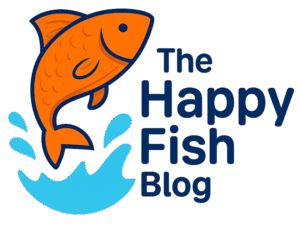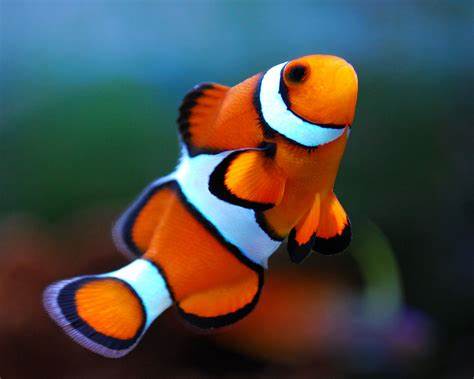Get the complete Clownfish care guide for beginners and advanced hobbyists. Learn the truth about their lifespan, ideal 20-gallon tank setup, unique gender-changing biology, and expert tips for diet and disease prevention (like ich and Brooklynella).
Introduction: The Beloved Icon of the Reef Tank
The Clownfish—or Anemonefish—is, without a doubt, the undisputed celebrity of the saltwater aquarium. Thanks to their unforgettable movie debut, these little orange-and-white bundles of attitude are often the first fish new hobbyists dream of keeping. While they are famously hardy and make an excellent choice for a beginner’s marine tank, thriving requires commitment that goes beyond simply dropping them into a tank.
Clownfish are hardy, semi-aggressive saltwater fish that demand a minimum 20-gallon tank, stable marine water parameters, and a consistent, varied diet to achieve their impressive lifespan. Like many veterans, my love for the saltwater hobby started with a wiggling pair of clowns. Over the years, I learned that providing them with a happy, long life means respecting their unique biology—from their strange relationship with anemones to their quirky gender-changing abilities. I’m here to share the blueprint for their long-term success.
Clownfish Basics: Anatomy, Origin, and Lifespan
To excel at Clownfish care, we start with where they come from and how long they can truly live.
Origin and Natural Habitat
Clownfish are native to the warm, shallow waters of the Pacific and Indian Oceans, particularly thriving among the structures of coral reefs. In the wild, they are defined by their symbiotic relationship with sea anemones. This arrangement is simple: the anemone provides protection from predators with its stinging tentacles, and the clownfish, which is protected by a layer of immune mucus, repays the favor by keeping the anemone clean.
Quick answer: Clownfish naturally inhabit coral reefs and thrive in symbiosis with sea anemones, but this partnership is not necessary for survival in a home aquarium.
Clownfish Lifespan: A Long-Term Pet
This is where the dedication pays off. Clownfish aren’t short-lived fish! The typical Clownfish lifespan in captivity is an impressive 6 to 10 years, and with pristine, stable water quality and an excellent diet, many owners report them living for 15 years or more. When you buy a clownfish, you are committing to a long-term member of your aquatic family.
Clownfish Habitat: Tank Size and Water Stability
Setting up a tank for your clownfish requires adherence to stable, marine-specific parameters.
Tank Size Requirements
A minimum tank size of 20 gallons is required for a single pair of Clownfish. If you plan on adding other fish, corals, or if you opt for a slightly larger species like the Maroon Clownfish, you should start with a 40-gallon tank or larger to allow for better parameter stability and territory management.
Water Parameters: Consistency is Key
Clownfish are hardy, but they are unforgiving of sudden swings in water quality. Maintaining stable marine water conditions is the most critical element of long-term Clownfish care.
| Parameter | Ideal Range | Why it Matters |
| Temperature | 75°F–82°F | Keep them warm and stable—use a reliable heater. |
| Salinity (SG) | 1.020–1.025 | Consistency is more important than the exact number within this range. |
| pH | 8.1–8.4 | Essential for all marine life; check regularly. |
| Nitrogen Cycle | Ammonia & Nitrite: 0 ppm | Always zero! Use a quality test kit. |
| Nitrates | < 20 ppm | Keep this low through weekly water changes. |
To master stability, you need the right tools. I always recommend the API Saltwater Master Test Kit to monitor your nitrogen cycle and the Instant Ocean Sea Salt (a reliable industry staple) for consistent weekly water changes.
The Clownfish Diet: Fueling the Personality
Clownfish are omnivores and, thankfully, they are rarely picky eaters. A varied Clownfish diet is the best way to ensure maximum color and health.
- Pellets and Flakes: Start with high-quality, marine-specific pellets or flakes. I personally swear by Omega One Marine Pellets because they are high in seafood protein and maintain water clarity better than many competitors.
- Frozen Foods: Supplement their dry food with frozen, meaty foods 3–4 times a week. Favorites include Mysis shrimp, frozen Brine shrimp, and finely chopped seafood. This provides essential variety and protein.
- Vegetable Matter: Ensure your clownfish occasionally receive foods with spirulina or other blanched greens to meet their omnivorous needs.
Quick answer: Clownfish thrive on a varied diet of high-quality marine pellets, frozen Mysis shrimp, and spirulina-based foods for balanced nutrition.
Do Clownfish Need Anemones? The Hosting Question
The single most common question I get is: “Do I need an anemone for my clownfish?”
The simple answer is no. Clownfish do not need an anemone to survive, breed, or thrive in an aquarium.
While they will readily host an anemone if one is present, in captivity, they are just as likely to “host” in other objects: the folds of a large LPS coral (like a Torch or Hammer), the corner of a powerhead, a magnetic frag rack, or even a ceramic cave. It’s hilarious to watch them wiggle and defend a random piece of equipment as if it were a deadly tentacled monster. If you do introduce an anemone, be aware they require even more specialized care and lighting than the fish itself.
The Quirky Truth: Clownfish Gender Change
This unique feature is perhaps the coolest biological fact about the clownfish. All clownfish are born male.
In a wild or captive group, a strict hierarchy is maintained:
- The Dominant Fish: This individual becomes the female (the largest fish).
- The Second Dominant Fish: This individual becomes the breeding male (the second largest).
- The Rest: All other individuals remain sexually immature males.
The incredible part? If the dominant female dies, the largest male will undergo a sex reversal to become the new female. It’s a remarkable biological mechanism that ensures the breeding pair always remains intact!
Health and Disease Prevention
Though hardy, the clownfish is susceptible to specific marine diseases. Prevention is always easier than treatment.
- Ich (Marine White Spot Disease): A parasitic infection that appears as tiny white dots on the body and fins. It’s common and treatable but requires quick action.
- Brooklynella Hostilis (“Clownfish Disease”): A highly contagious and lethal parasite that causes heavy mucus production, sloughing skin, and rapid breathing. It requires immediate treatment.
Expert Advice: Always, always, always quarantine new clownfish (and any new fish) in a separate tank for 4–6 weeks. This prevents bringing in ich or Brooklynella into your main display tank. Most health problems for this species stem from stress due to poor water quality or the introduction of a new, infected fish.
Best Tank Mates for Clownfish
Clownfish are considered semi-aggressive—they’re mostly peaceful, but the breeding female can become quite territorial around their chosen nesting area.
Best Tank Mates are peaceful, non-aggressive species that inhabit the upper parts of the water column and won’t compete for the clownfish’s territory.
- Peaceful Wrasses: Small, non-predatory species like Fairy or Flasher Wrasses.
- Gobies: Watchman, Diamond, or Randall’s Gobies are excellent bottom-dwelling companions.
- Small, Peaceful Fish: Firefish, assessories, and even small tangs (in large tanks).
- Invertebrates: Cleaner Shrimp, snails, and hermit crabs are perfect additions.
Avoid: Large predatory fish (like Lionfish), triggerfish, or other semi-aggressive fish like certain large Angelfish or Damselfish, which may bully the clownfish.
Clownfish Breeding: A Rewarding Challenge
Clownfish are one of the few marine fish that regularly breed in home aquariums. Breeding requires a well-established, paired couple that lays eggs on a flat surface, usually guarded by the male. The challenge lies in raising the larvae:
- Fry Care: Once the eggs hatch, the tiny larvae are extremely vulnerable and require specialized, tiny live food like rotifers and newly hatched brine shrimp for the first few weeks.
- Patience: This is a dedicated, often exhausting effort, but watching your pair successfully raise a clutch of eggs is one of the most rewarding experiences in the hobby.
Summary/Quick Reference Card: Clownfish Care
| Category | Key Requirement |
| Common Name | Clownfish / Anemonefish |
| Tank Size (Min.) | 20 Gallons (40+ for a community) |
| Lifespan | 6–10+ Years |
| Temperament | Semi-Aggressive / Territorial Breeder |
| Diet Focus | Omnivore (Marine Pellets, Frozen Shrimp, Spirulina) |
| Water Temp | 75°F–82°F |
| Salinity (SG) | 1.020–1.025 |
| Anemone Required? | No (They will host in corals or objects) |
| Gender Quirk | All born male; dominant fish becomes female |
| Health Risks | Ich, Brooklynella (Quarantine is essential) |
Conclusion: Creating a Thriving Marine World
The Clownfish is the gateway to the marine hobby for so many people, and for good reason. They are hardy, full of personality, and possess a fascinating biology. The secret to years of thriving Clownfish care is consistency: maintain stable water parameters, feed a varied and high-quality diet, and commit to preventative care like quarantining.
Ready to bring this iconic fish into your home? With this guide, you have everything you need to give your own “Nemo” a long, vibrant life!

